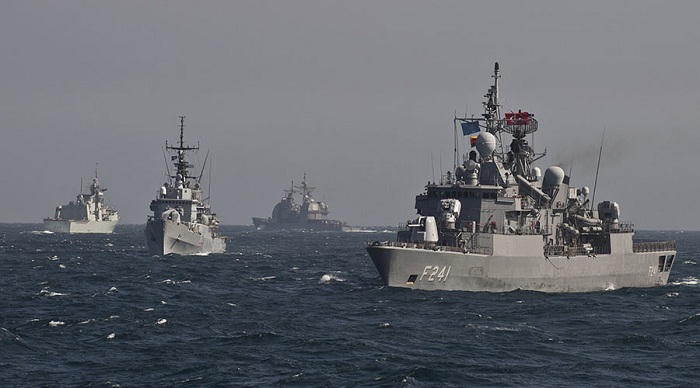Moscow warns NATO Black Sea buildup & increased spending may lead to new Cold War

Part of the strategy adopted at the meeting was to increase NATO`s naval presence in the Black Sea to complement its “regional posture in the air and on land.”
“We will have increased presence in the Black Sea, but it will be measured, it will be defensive and it will in no way aim at provoking any conflict or escalating tensions, but it is one element in a broader adaptation of NATO defense and deterrence to a more demanding and challenging security environment including in the Black Sea region,” Stoltenberg said answering a question from a reporter from St. Petersburg.
Responding to the latest move of the military bloc’s expansionist strategy, the Russian envoy to NATO, Aleksandr Grushko, said Moscow would carefully analyze the developments and issue an appropriate response.
“All these decisions will be subject of thorough analysis… And, undoubtedly, we will take all necessary measures to properly safeguard Russia’s national interests in this region,” Grushko said.
In addition to the Black Sea buildup, the Russian envoy also warned that the agreed increase of contributions to NATO`s budget might lead to a new arms race.
Speaking on Thursday Stoltenberg stressed that NATO’s continuous adaptation to security requirements required a “fairer burden-sharing among Allies,” something which the US has been insisting on. He noted that defense spending in 2016 increased in real terms by 3.8 percent.
On Wednesday, US Defense Secretary James Mattis once again stressed the need for the allies to contribute 2 percent of their GDP to NATO’s goals. In 2014, NATO members reaffirmed their commitment to spend 2 percent of their economic output on defense and 20 percent of that amount “on major new equipment, including related research and development.”
“The danger lies in the fact that [NATO] is expected to increase not only the spending but also significantly increase the purchase of arms,” Grushko noted. “If these plans will be implemented, we may find ourselves in the situation of a Cold War, when the military planning, aimed at countering a ‘large enemy’ would generate respective policies.”
Right now, the envoy warned, NATO is in danger of being stuck in a “vicious circle” of an arms buildup “from which it will be very difficult to get out.”
The history of the Cold War, Grushko noted, should have taught the alliance that military planning and policies on their side always triggered a response from the Soviet Union, until confrontation between the two blocks “led to a situation where it became clear that the price of peace in the Cold War turned out to be unsustainable for everyone.”
Moscow cannot view NATO as a potential partner until European states figure out where their true national and security interests lie, the envoy noted.
“While NATO maintains its stance not to cooperate with Russia, adopted at the summit in Warsaw, we cannot view the Alliance as a potential partner,” Grushko said, warning that Moscow may soon lose interest in pursuing contacts if the alliance “does not promote the restoration of bilateral cooperation.”
On 1 April 2014, NATO unanimously decided to suspend practical co-operation with the Russian Federation, in response to the Ukraine crisis. It then renewed this position last summer during the Warsaw summit.
In Warsaw, NATO members also agreed to boost its NATO presence in Eastern Europe and the Baltic region to levels not seen since the Cold War - posting four rotating multinational battalions to Estonia, Latvia, Lithuania, and Poland.
In January, 2,800 pieces of US military hardware, including Abrams tanks, Paladin artillery, and Bradley fighting vehicles, and 4,000 troops arrived in Europe as part of the operation. Just last week, the alliance concluded their Sea Shield 2017 naval drills with the participation of seven NATO member states and Ukraine in the Black Sea.
Earlier on Thursday, addressing FSB officials, President Vladimir Putin accused NATO of meddling in Russian affairs and trying to provoke a conflict. NATO with its “newly-declared official mission to deter Russia” poses a threat to global security, Putin said.
“This is the goal behind the expansion of this military bloc. It happened before, but now they have found a new justification which they believe to be serious,” the president added.
“They are provoking us constantly and are trying to draw us into confrontation,” the Russian leader stated, adding that NATO states are continuing their attempts to “interfere in our internal affairs in a bid to destabilize the social and political situation in Russia itself.”















































